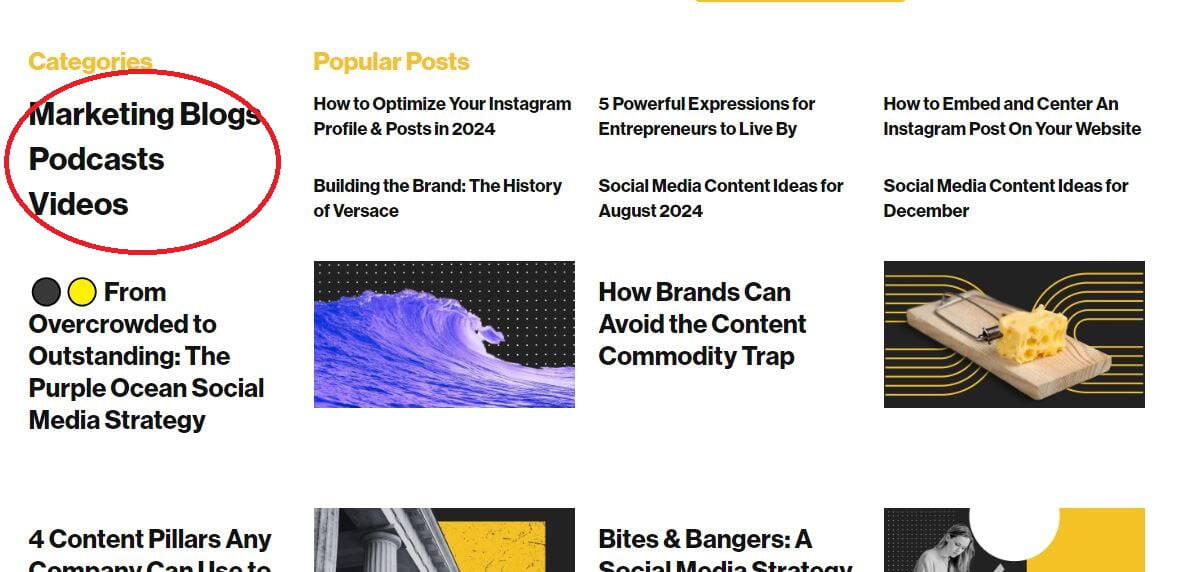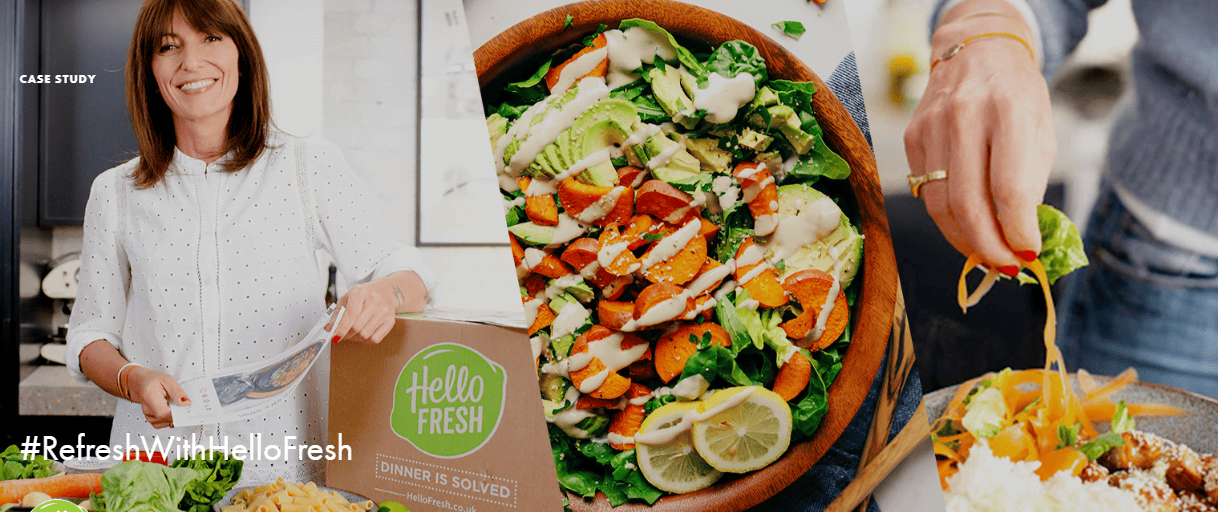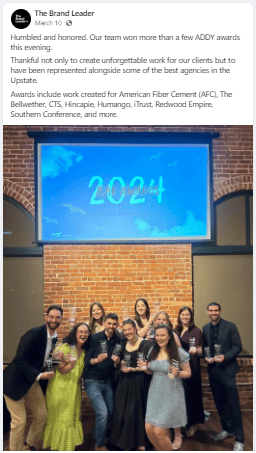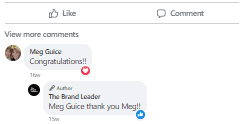Effective PR, or public relations strategies, can improve a brand’s visibility and credibility. A well-thought-out plan is essential to ultimately improving individual and organizational reputations. These, in turn, are key to business growth and success.
In this article, I’m covering key PR techniques dedicated to social media agencies. So, if you’re looking to improve your public image and your reach as a social media agency, or your customers’ on social media, read on!
What Are Public Relations Strategies?
Public relations strategies are the methods organizations or individuals use to improve how they communicate with the public. They are similar to marketing strategies but focus more on enhancing brand reputation.
A comprehensive PR strategy combines owned, earned, and paid media:
- Owned media – These are outlets owned by the brand, such as the website, blogs, or social media profiles.
- Earned media – These refer to content produced by any third party, without being paid to do so, like customer reviews, social media posts, or word-of-mouth recommendations.
- Paid media – These are advertisements, sponsored posts, or influencer content that are financed.
Robust PR strategies are especially important when dealing with a bad reputation. Besides fixing bad reputation problems, there are other benefits of effective PR efforts. They help increase brand awareness, strengthen audience relationships, and boost trust.
7 Public Relations Tactics for Social Media Agencies
When we talk about public relations for social media agencies, we mean PR strategies employed by these companies either to improve the visibility and credibility of their own brand or their clients’ on social platforms. Here are public relations strategies to consider:
1. Write and Distribute Press Releases
Writing press releases is key to an effective PR strategy. As a social media agency, you’re not likely to craft these key PR tools on behalf of your client (after all, you only offer social media services). However, you should leverage them to enhance your own social media agency reputation and disseminate your company’s PR messages.
To ensure their effectiveness, your press releases need to be focused. What exactly do you want to accomplish with this key PR tool? Do you want to increase awareness of your social media agency’s upcoming PR event? Or maybe you want to announce your social media agency’s newest corporate social responsibility initiative?
Once you know your objective, everything you write in your press release should contribute to the achievement of this goal. Check out this excellent release example from Seize Marketing, which started out offering, among others, basic social media marketing services:

The press release goal is to promote the agency’s expansion into web development and other marketing services. So, the entire content revolves around that goal.
You can post your press release on your social media agency website. But for the best results, leverage PR distribution services like Seize Marketing Agency did. This way, you can increase your chances of media professionals seeing your content and giving you media coverage.
Reach out to relevant media personnel as well. As an agency, you should target publications read by your potential clients to ensure the news reaches the right people. Just go to their website. You should find their contact details.
Following up after distributing press releases can significantly boost media coverage. But make sure you don’t overdo it. If journalists get annoyed, they’ll likely end up blacklisting you and won’t even bother reading your subsequent releases and pitches.
Don’t have time to do all this? Then seek professional PR services. Just make sure the PR agency you choose has media contacts in your specific niche. For instance, if you specialize in social media marketing services for food companies, then you’ll want a food PR agency that has a huge network of food journalists. The rationale is simple: Your potential clients—restaurants and other food brands—likely read the food publications these journalists write for. That means when your press release on your newest social media agency services gets published in these publications, they’ll likely see the content, too.
2. Develop Other High-Quality, Valuable Content
Apart from press releases, there are other types of high-quality content that can help enhance brand reputations. When you post content pieces that aim to educate about niche topics, you essentially demonstrate your (or your clients’) expertise in that niche. The result? In the eyes of others, you or your client become an authority in your field. With this content, you can also promote brand values.
But for you to reap the PR benefits of this valuable content, it’s crucial to deeply understand your target audience’s interests, behaviors, and challenges. This knowledge will help you create compelling content that truly resonates with them. You can get this information from analytics tools and audience surveys, among others.
If you’re trying to boost your social media agency’s reputation, consider incorporating a variety of content formats into your public relations strategy, such as blogs, videos, podcasts, infographics, and newsletters. This will help ensure you cater to as many content preferences as possible.
This agency, for example, offers blog posts, podcasts, and videos all in one place for their website visitors.

But if your aim is to enhance your client’s image, then the content you create for them will necessarily only cover social media content (remember, you’re a social media agency. That means you offer only social media marketing services). That, however, shouldn’t stop you from creating different types of social media content for your client. You can design infographics for sharing, create informative text-only or text-and-image-based social media captions, and quizzes that provide information in a fun and engaging way, for example.
As for the topics you should touch on, those should depend on where you or your client want to be seen as an authority in.
For instance, if you want to enhance your agency’s image, then your content topics should revolve around social media, your expertise. If you’re creating social content for a client, the topics should align with the products or services they offer. For instance, if they sell email marketing software, then the social media posts you create for them should be about email marketing.
Your valuable content topics can also depend on existing brand values you or your client wish to highlight.
For instance, if your agency or client want to be seen as a brand that emphasizes sustainability, then your social content could educate people about the importance of environmental protection, for example.
Check out how social media agency Faceplant Creative crafted informative organic social posts on fair trade and sustainability to highlight those exact Pact brand values:

It’s essential to conduct proper research to ensure all content is accurate and current. This careful attention to detail helps prevent the spread of misinformation, protecting your agency’s and client’s reputation and building public trust. Always aim to reference industry leaders, cite credible research, and present well-supported arguments.
Don’t have enough time to create all this content? Look into adopting innovative technologies. Explore generative AI use cases in content creation, for example. The tool allows you to produce diverse content efficiently. Generative AI can also help enrich the quality of your copywriting, making it more appealing to your or client’s customer base.
3. Collaborate with Influencers
Influencer marketing is an effective PR tactic, with 69% of customers trusting influencers’ recommendations for new products or services. But, it’s crucial to choose influencers who align with your brand’s or client’s vision to maintain authenticity. These influencers should appeal to the target audience. It will ensure any collaborative content is genuine and enhances your advertising efforts for your brand or customer.
When working with an influencer, the sky’s the limit when it comes to the types of content you can ask them to create for your agency or client. Apart from valuable niche content, they can also provide behind-the-scenes looks at your client’s newest webinar or Q&A sessions about you or your customer’s products and services, for example.
Additionally, influencers can initiate hashtag campaigns to further extend content reach.
For instance, as part of its marketing campaign for HelloFresh, social media agency IMA teamed up with food influencers like Davina McCall. The influencers cooked using HelloFresh meal kits for 21 days and documented their cooking sessions on social media using the hashtag #RefreshWithHelloFresh:

According to IMA, the campaign generated 274% more content impressions and 325% more extra content for HelloFresh, including earned posts.
Building long-term and strong relationships with influencers can provide ongoing benefits. Continuous collaborations ensure a consistent brand message across marketing projects.
That’s why it’s a great idea to attend networking events to meet influencers and continue to interact with them even when you don’t have an ongoing marketing campaign.
Following up after the event is key. Create digital business cards to share contact details and links to your portfolio or social media. This provides influencers with easy access to your information for potential future collaborations.
With continuous interactions, you ensure these influencers remember you when you reach out to them for a campaign. That will increase the chances they’ll oblige to your offer.
4. Develop a Crisis Management Plan
As a social media agency, you need a plan you can activate when your company faces a PR crisis. If your client has a PR situation on their hands, you will need to develop a plan specific to the social media crisis they’re currently facing.
Your crisis communication plan should provide a foundation for customizing quick responses. If you’re developing the plan for your social media agency, having ready-to-use response templates for every potential crisis situation helps speed up crisis management. If you’re creating one for your client, then you’ll probably only have to create social media templates for a specific PR situation.
But whether you’re creating a strategy to handle your agency’s PR crisis or your customer’s, make sure you establish a dedicated crisis communication team as part of your plan. Each team should have clearly defined roles and responsibilities. You could have a crisis team leader, a communications coordinator, and a media relations specialist. Although they typically should come from your social media agency, they could also come from your client’s company, if that is their preference.
If the crisis management plan is for your social agency, regularly test it through various scenario simulations. A potential crisis simulation could involve how your social media agency will respond to a sensitive client information leak. Then tweak your plan based on the results. This will help ensure the effectiveness of your crisis management strategy once a real PR crisis hits your agency.
If the plan was developed on behalf of your client, testing it prior to implementation is likely impossible. Since the PR crisis is already ongoing, you’ll have to activate it then and there. Just secure your client’s approval of the overall crisis management strategy prior to implementation. Also, include tried-and-tested PR strategies for crisis management in the plan based on your own experience with other companies that faced a similar PR disaster.
5. Monitor Social Media Platforms for Mentions
Monitor discussions related to your brand (or your clients’) in real time. This way, you can interact with potential social media agency clients or potential customers of the brands that sought your social media services. In the process, you enhance your agency’s positive reputation or your customers’. Who doesn’t want a friendly and approachable brand, after all?
You can start by checking your or your client’s own social media platforms and responding to comments.
See how The Brand Leader, a social media agency based in South Carolina, takes the time to reply even to a user’s “Congratulations” comment:


You can also use social media monitoring technologies. They can notify you every time someone mentions or tags your company or client on social media.
Monitoring social media platforms also helps you limit the potential damage caused by negative comments that spread quickly online. Just make sure you respond promptly to social media interactions. This is exactly what The Social Media Element agency did for Gatwick Airport:

Because of its quick and thoughtful responses, the social media agency managed to turn travel woes into delightful experiences for travelers. In the process, it boosted the reputation of Gatwick Airport, its client.
6. Partner with Complementary Brands for PR Campaigns
Collaboration often leads to better PR results. With it, your social media agency or your client can connect more effectively with audiences, improving engagement and brand image.
Look into organizing joint events like Facebook webinars, social media takeovers, or on-site conferences, if you’re running the campaign for your social media agency. You can also do the following:
- Cross-promotions – Run campaigns that promote each brand’s products or services on each company platform. If you’re doing this for your social media agency, you can leverage multiple channels. If it’s for your client, the cross-promotion on their behalf will be limited to social media.
- Joint giveaways – Host social media giveaways where participants must engage with both brands, increasing visibility and interaction. You can do this for your social media agency or your client.
- Guest blogging – Write articles for the other brand’s blog or website and vice versa. This way, your social media agency can tap into the other’s audience while the other brand can tap into yours.
Choosing the right brand partnership is essential for this to work. Both brands need to offer complementary services and share target similar audiences. For instance, as a social media agency, you may partner with a graphic design software company like Canva to hold an on-site workshop on social media marketing. Assume your client sells HR software. You can co-organize a Facebook live session on how to land the perfect candidate with a job platform company like Career Builder on their behalf.
7. Track and Measure the Performance
To effectively measure the success of your public relations strategies, it’s essential to define Key Performance Indicators (KPIs) that align with your PR goals.
Here are some common KPIs and the specific metrics you should track:
- Enhancing Brand Awareness
Metrics: Number of media impressions (how often the content you created for your agency or your client appears); general media mentions of you; social media mentions of your client.
- Increasing Web Traffic
Metrics: Traffic sources and number of visitors to your agency website from all PR activities. If the PR campaign is for a client, you’d track the traffic sources and number of visitors to the client website from the social media content you created for them.
- Improving Media Engagement
Metrics: Interactions with the press releases you create for your agency; social media content you create for either your social media company or your client, including likes, shares, and comments.
- Boosting Event Attendance
Metrics: Number of event attendees, registration data, or ticket sales driven by your PR campaigns specifically for your social media agency.
To monitor some of these metrics effectively, you’ll need dedicated analytics tools.
For instance, Google Analytics is great for tracking web traffic, while the analytics tools of social platforms like Facebook or Instagram provide comprehensive insights into social media engagement and performance. You can also use third-party social analytics tools like Hootsuite.
Don’t forget to update your public relations tactics based on performance data. This ongoing process ensures effective PR techniques. Proactively modifying your plan based on real-time data will also make your PR efforts always relevant.
Final Thoughts on Strategies for Social Media Agencies
The success of a social media agency hinges on its ability to implement and measure the impact of strategic public relations efforts. This article has outlined seven key strategies designed to elevate your agency’s and client’s visibility, enhance brand recognition, and build enduring relationships with your audience.
Summing up, you should look into developing high-quality content, partnering with influencers, and writing and distributing press releases. You also need to manage crises effectively with a plan, monitor social channels for mentions, collaborate with complementary brands for PR campaigns, and meticulously track PR performance through KPIs.
Take advantage of the full potential of public relations to make you and your clients happy, and propel your agency forward.


